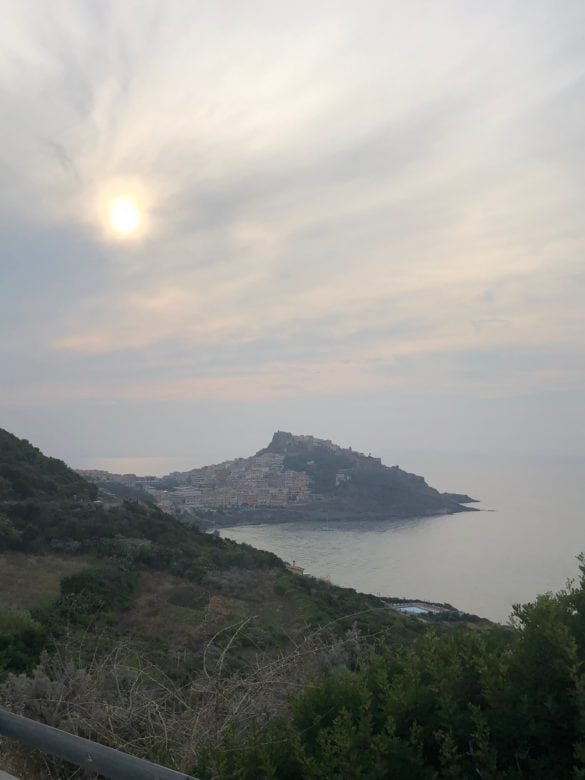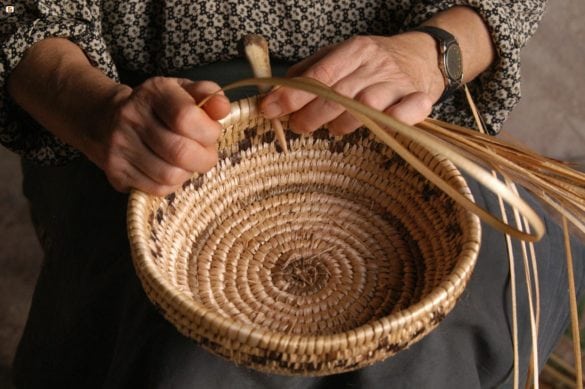I have always been passionate about baskets, African, Peruvian, Indonesian, Japanese you name it, but I would have never imagined to find in the North West region of Sardinia a museum that showcased the Mediterranean art of weaving.To my delight I learn that the Museum of Mediterranean Weaving is located on a castle , Castello Doria built between the XIIth and the XIVth century at a hilltop of a picturesque historic town called Castelsardo near the city of Sassari a little more than one hour drive from hour hotel the Torreruja in the Isola Rossa.As we get closer parked the car near shops selling Sardinian Artigianato (handicrafts) and souvenirs views of this fortified small town are breathtaking and literally so the climbing through narrow alleys to reach the high walled castle citadel where the museum is located.
We pass a few tourists and small cobblestoned floor handicraft shops while old women sitting on doorways weave with dwarf palm, marine hay recalling the techniques, forms and decorations of the ancient basket-working tradition of Castelsardo .We sense as well their strong desire to communicate their personal taste and innovative talents as contemporary local craftsmen.
If you happen to go, do purchase their work as it will surpass by far what can find in souvenir shops or at the airport or check our shop gallery for the one–of-a-kind collector’s baskets of your dream and we will delivered it promptly at your door.
The atmosphere of the citadel transpires authenticity and character. The museum entrance is perched high above sea level. We pause a few minutes to admire the coastal views of the Asinara golf with it’s a distant marina and dominating hilltop wineries. The wealthy Genovese family, the Doria, strategically picked too well their spot.
We explore the museum’s nine rooms dispersed in two floors between large stones. The first section is dedicated to a rich variety of materials and to acquaint us with the way the islanders used palm tree hamerops, reeds, algae,mastic trees Mediterranean dwarf palms, myrtle , sea grass, wheat straw and olive tree trunksfor making various item.
Quite impressive!
We move onto the artifacts area. Most of it are baskets I have never seen and other products made woven in different regions of Sardinia, used as containers, to store food, for trading or religious ceremonies. Each piece is a true masterpiece and the reflection highly qualified artisan skills, creativity and enormous time consuming discipline.
The most common baskets are calledin Sardinian dialect. Corbula (Containers for food stuffs). They are woven with fixed stitch technique using a needle with weft of dwarf palm, warp of sea hay and feature stunning colorful decorations in with natural dyes in natural raffia. Others the Canestro were used to place flour and bread rising.
Whether decorated with Bulgarian or Greek ornaments, embroidered lilies and roses in red wool , satin ribbons or applied in red macramé textiles, the rare baskets are truly sublime!
Lastly an interesting exhibit – the so-called “su Passo” is a boat woven entirely from seaweed, cane and reed. These boats are used by fishermen in the lagoons of cabrasand Santa giustain Sardinia.




















